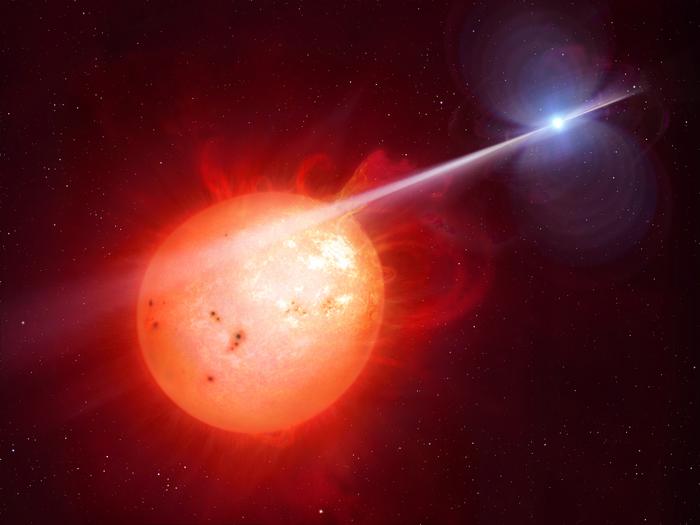
New results from the James Webb Space Telescope find that radiation from ordinary galaxies cleared the primordial haze left over from the Big Bang, allowing the first light to shine through the early universe.

Astronomers have just found a second example of a white dwarf acting as a pulsar, following the first discovery in 2016.

Using the Green Bank Telescope (GBT), US astronomers have detected a new binary millisecond pulsar. The newly found pulsar, designated PSR J0212+5321, belongs to the "redback" subclass and is located relatively nearby.

An object orbiting a star 1,400 light-years away is seriously confronting our notions of what's possible in the Universe.

In a recent paper a UK physicist uses past missions and recent findings to encourage the importance of searching for life in the atmosphere of the solar system's most inhospitable planet, Venus.

Phosphorus is the least abundant essential element necessary for life, and its recent detection in icy grains from Enceladus could redefine how we look at life beyond Earth.

A group of Australian space scientists discovered a white dwarf star that appears to be in the beginning stages of crystallizing into a celestial diamond.

When scientists detected the gamma-ray burst known as GRB 221009A on Oct. 9, 2022, they dubbed it the brightest of all time, or BOAT. Follow-up studies showed that GRB 221009A was 70 times brighter and far more energetic than the previous record holder.

An international team of astronomers has detected complex organic molecules in the most distant galaxy to date using NASA’s James Webb Space Telescope.

The Breakthrough Listen Investigation for Periodic Spectral Signals (BLIPSS) project is designed to seek and amplify strangely pulsed radio emission from the galactic center that may be messages from extraterrestrial intelligences.

A survey of the galaxy has revealed hundreds of mysterious cosmic threads pointing towards the supermassive black hole at the heart of the Milky Way. The filaments stretch five to ten light years through space.

This plume is larger than any previously observed on the moon and may contain the necessary chemicals for life coming from below its icy surface.

Astronomers studying black holes have serendipitously found another rarity: a dead star rocketing away from its birth supernova, leaving a comet-like trail of radio emission in its wake.

The cyclone on Uranus, compactly shaped with warm and dry air at its core, is much like those spotted at Saturn. Now,cyclones have been identified at the poles on every planet in our solar system except for Mercury.

The belt was discovered around a brown dwarf known as LSR J1835+3259 and is 10 million times more intense than Jupiter's.